California dreamin’

In the mid ‘00s, US horror cinema was partially dominated by studio remakes that cranked up the originals’ nastier aspects. The work of genre mavericks from the 1970s was in demand for re-evaluation. Briefly, the convenience of brand recognition cross-pollinated with the feral instincts of the New French Extremity. Though the movement is malleable in terms of characteristics and filmography, Wes Craven and producing partner Marianne Maddalena had the forethought to handpick Alexandre Aja for a revival of The Hills Have Eyes.
Aja’s second feature, High Tension,satiates an appetite for brutal horror fare that spits in the general direction of ratings boards. In Craven’s words: “demonstrate[s] a multi-faceted understanding of what is profoundly terrifying”. The two filmmakers indeed paired well. The result of this collaboration produced a film that stands on its own while being complementary to Craven’s work.
In the context of extreme cinema permeating the culture at large, the fact that Aja landed such a high-profile gig signified a vote of confidence in the current crop of splatter filmmakers from a horror icon. The most common critique of remakes at the time can be boiled down to the idea that they are constructed primarily to get to the fleshy bits, artistic integrity be damned. To the extent that a person can be offended by such blasphemy, that line of criticism may hold true.
Also Read: A Life of Faraway Desires: The Outsider Music Of ‘Knife + Heart’ [Spins and Needles]
Looking back at the talent involved, specifically at non-American filmmakers working from the outside in, it’s embarrassing how many great genre films we take for granted. Jaume Collet-Serra’s House of Wax and Florent Emilio Siri’s Hostage immediately come to mind. Both are remakes/homages that are as ferocious as they are creative. And Aja’s The Hills Have Eyes masterfully doubles down on sleaze for aesthetic purposes. He updates a classic horror story to fit a modern audience’s thirst for blood.
Craven’s The Hills Have Eyes is a film about a country that cannibalizes itself and forcibly spews the bile over a terrorized public with regularity. The late horror maestro frames this cycle of violence around a family of model conservatives. Big Bob Carter, with his red, white, and blue-plated revolver, is emblematic of the white American patriarch: loud, angry, and self-righteous. But he’s no match for the savagery that echoes back at him. Nor is the rest of his family prepared to fight off a gang of ravenous hill people.
For the most part, the set-up is unchanged in the remake. A road trip goes awry in an environment least hospitable to a family of soft, crunchy capitalists where, per the tag line, “the lucky ones die first”. But Aja’s take differs in two key ways. It trades drama for gore and it uses American pop music to mock its values.
Also Read: Sprout and the Bean: How ‘The Strangers’ Uses Music To Create Its Disturbing Atmosphere [Spins and Needles]
The opening credits sequence in Aja’s film draws a stark connection to the use of nuclear weaponry and its devastating effects. Compared to the original, which, in all fairness, boasts a killer electronic score by Don Peake, this sequence is immaculately designed. Images of radiation-exposed babies, obliterated buildings, and the hill people are interspersed over a remixed version of Webb Pierce’s country ballad “More and More”. The track features manipulation by composer duo Tomandandy, whose horror wheelhouse consists of warping easily digestible tunes into nightmare fuel.
Pierce’s lyrics about lost love are compatible here with images of a recent, violent past. Whereas the hill people in the 1977 film were banished to the desert in a blood feud, the 2006 film establishes that the government forced them onto a nuclear testing site away from public view. Though the Jupiter clan has less personality in the remake than they do in Craven’s film, the ensuing siege against the Carter family is more personal. Subtlety ain’t this film’s style in the least. But Pierce’s song is an effective mood-setter that fits snugly alongside the ominous monotone of Tomandandy’s “Forbidden Zone”.
Tomandandy would weaponize country and roots music in the future to a much more personal degree. But the duo takes advantage of the eerie ambiance of music in The Hills Have Eyes. Music is enjoyed privately for the most part. Though Aja slyly calls attention to the Carter family’s reliance on technology as a source of passive entertainment. In the film, iPods and radios are markers of a civilized culture to an extent. Ironically, the comfort they bring is also what makes the Carters easy prey.
Also Read: The Vibrant Deathscapes in ‘Sound of Violence’ [Spins and Needles]
In Matt Carlin’s essay on Craven’s original, he cites the filmmaker’s conscious effort at “stripping away” objects that the Carters rely on in order to test their survival instincts. Per Craven himself, the idea was to hold the hill people and the Carters as mirror images of one another. Throughout his entire career, the all-consuming horror in Craven’s films is that of a civilized public regressing to its most primitive state. It’s no wonder he sought inspiration from the 16th-century legend of Sawney Bean. Bean was a cannibal whose clan of incestuous family members are said to have eaten over a thousand people in a span of 25 years.
When authorities found the Bean clan, adults and children alike were hanged without due process. Carlin’s essay quotes Craven saying this historical event points to the capacity human beings have for savagery, even in the highest forms of authority. His film, therefore, encapsulates a struggle that humankind has with itself. There is an attempt at communication between the Carters and the hill people that borders on reasoning. However, nothing comes of it.
Aja’s film bucks that dynamic for an approach that itself is primal and unyielding. By the mid-00s, the conversation had outgrown a basic “man versus man” framing. The lunatic fringes were not just relegated to negligible pockets of the desert, but had now extended country-wide. Building on this horrific realization, the 2006 film expands the canvas to reflect a citizenry trapped in hell amongst one another. Here, the model conservative family is tasked with survival and also challenged for its role in maintaining injustice.
Also Read: ’28 Days Later’ and Post-Rock: Scoring The Unlikely Heroes of the Apocalypse [Spins and Needles]
The leap in style between the two films is jarring. But Aja successfully evokes nostalgia for the ‘60s and ‘70s in one particular needle drop. The Mamas and the Papas’ “California Dreamin’” is the kind of throwback song that oddly enough makes sense to put in a horror film. It is rife with melodic tension underscoring lyrics about being homesick. The song was written by wistful Californians during a cold winter in NYC, and it isn’t difficult to draw a parallel to the Carters’ initial impatience at being stuck in the middle of nowhere. They are also literally trying to get to California, so its symbolic purpose is pretty cut and dry.
It wouldn’t be un filme de Aja without escalation, however. The scene that features the song perfectly illustrates the Carters as a “whitebread” family luxuriating in their middle-class existence. Aja had already proven his ability to disrupt a similarly peaceful moment, but mentorship from Craven clearly elevates his game. The quick, gruesome kills of High Tension are supplanted here by slower, methodical scenes. And what appears to be a willful perversion of a more innocent era is actually in line with Craven’s artistic priorities. The Flower Power generation was not exempt from the horrors of their time in horror films, nor are their children in the new millennium.
Also Read: Blondes, Beef, and Brutality: The Sounds of ‘The Texas Chain Saw Massacre’ [Spins and Needles]
With his 1977 film, Craven delivers on the money shots one would expect from a grindhouse staple. But his craft favors a relentlessly bleak outlook. The cinema verite style he adopted working as an editor for documentaries makes the attack sequences nauseating. Washed-out colors and natural lighting uncannily mimic footage from a crime scene. The perspective is such that it can only be interpreted through the eyes of a cruel omnipotent figure. One shot that haunts me on repeat viewings is that of matriarch Ethel Carter’s body propped up as bait. Her skin is just pallid enough to be convincing and the expression on her face is one of blissful delusion. The film ends on a rather hasty note that denies the audience gratification of a victory over the hill people. It’s a proper Feel Bad summer movie. Aja’s film is no less upsetting.
The remake adds the technical prowess of an action film, earning brief moments of heroism after excruciating fight sequences. The musicality of the film contrasts Craven’s blunt sensibilities, but Tomandandy add hints of sarcasm in their music. “The Quest 2” is a track that scores a heroic moment for our mild-mannered husband turned ruthless killer, Doug. Their blend of a patriotic melody with borderline superhero movie phrasing makes Doug’s rampage a respite from the pillaging and implied baby-eating. Meanwhile, the audience gets to enjoy a momentary push-back.
Also Read: Feeling The Groove of Death In ‘Final Destination’ [Spins and Needles]
While antithetical to the themes of the material, in theory, this small gift to the is quickly stomped on as the film comes to a close. In either version, The Hills Have Eyes is not about heroics. Especially in 2006, which posits the terror the Carters face as a reckoning of genocidal practices. Though Aja embellishes the material, he never betrays Craven’s vision. Fitting for its own time, the remake ends on a note of dread and uncertainty.
Remakes seem to be a perpetual sore spot in the Seedy Back-alley of Ideas where horror discourse is hashed out. But The Hills Have Eyes is a rare example of a film that pushes the boundaries of the original while also being a singular experience on its own. I would even go as far as saying both versions should be considered as a pair. As conscious as they are about the kind of social horrors that are too often ignored, the films never forget to satisfy a horror audience. Craven has stated on camera that the filmmaker should be “the first monster that must frighten the audience in a horror film”. For my money, Aja accomplishes this goal. And his sense of danger is refreshing, even in this current milieu where folks are far too cautious to break anything in the houses built by horror legends.


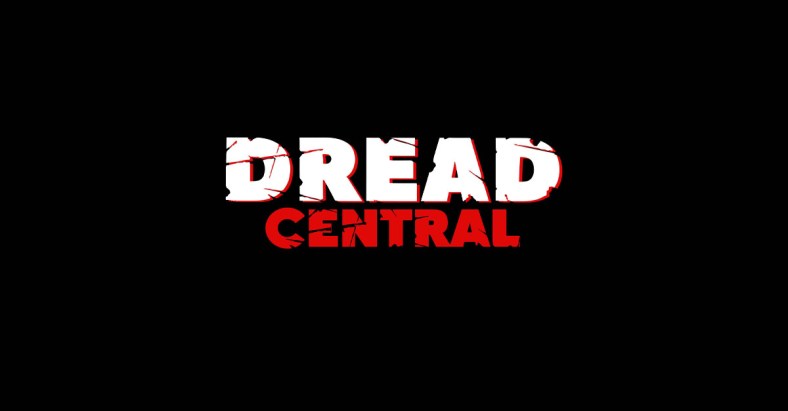


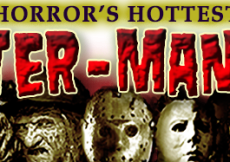
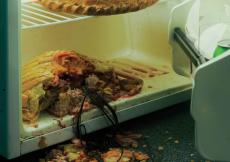


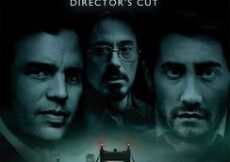
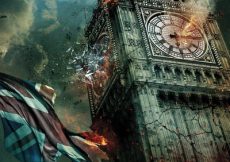

















:quality(85):upscale()/2023/05/11/976/n/1922564/782262e2645d6b967847b4.74342194_.png)








